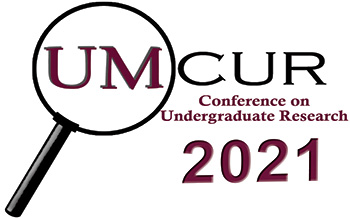Project Type
Presentation
Faculty Mentor’s Full Name
Bryan Cochran
Faculty Mentor’s Department
Psychology
Abstract / Artist's Statement
Title: Binegativity and Depression: Examining Alcohol Use Among Nonexclusively-Oriented Womxn
Authors: Kaylee Kronsperger, Kinsie Dunham, M.A., & Bryan Cochran, Ph.D.
Purpose:
Alcohol use disorders can lead to cirrhosis, cancer, domestic violence, and even death (Carvalho, Andre F, et al. 2019). Gender and sexual minorities (GSM; non-cisgender and nonheterosexual individuals) report elevated rates of alcohol use (“Sexual Orientation Differences”, 2013), although nonexclusively-oriented womxn (NOW; womxn-identified people attracted to more than one gender)(womxn - terminology encompassing all women identified individuals; more inclusive for transgender and nonbinary individuals) in particular report higher rates of alcohol misuse. NOW also report higher rates of depression than other sexual minority groups (Feinstein & Dyar, 2017). Minority stress theory conceptualizes health disparities as consequences of the increased stress of having a socially-stigmatized identity. Nonexclusively oriented individuals experience unique bi-negative minority stressors and elevated depression symptoms that may explain high alcohol misuse rates. This project investigates the associations between relevant bi-negative minority stressors (Meyer, 2003; Yost & Thomas, 2012), depression symptoms, and alcohol use disorder symptoms (AUD), in order to inform prevention and treatment for this at-risk population.
Methods:
NOW (n = 219), were recruited using social media and completed an online survey. We conducted a hierarchical regression analysis to examine the relationships between bi-negative stress (distal and proximal), depression symptoms, and alcohol use disorder symptoms.
Covariates (age, college student status, and education level), bi-negative minority stressors (proximal and distal), and depression symptoms were entered in separate steps predicting alcohol use disorder symptoms. Covariates (Adj. R2 = 0.127), bi-negative minority stressors, and depression (Adj. R2 = 0.210) accounted for 33.7% of the variance in alcohol disorder symptoms. Proximal bi-negative minority stress was positively related to alcohol disorder symptoms (B = 0.491, p < 0.001), and depression symptoms (B = -0.121, p = 0.043) were negatively related to alcohol use disorder symptoms.
Results:
Results indicated that proximal binegative minority stressors are associated with alcohol use disorder among NOW. Further research is warranted to understand the relationship between depression and alcohol use, in order to decrease alcohol use and improve the well-being of NOW. Alcohol-related illnesses and deaths are preventable, especially if factors associated with increased harmful use are identified within vulnerable populations.
Conclusion:
Results of this study demonstrate the need for preventative resources for NOW in order to decrease alcohol usage and improve the overall health of the LGBTQ+ community.
Category
Social Sciences
Binegativity and Depression: Examining Alcohol Use Among Nonexclusively-Oriented Womxn
Title: Binegativity and Depression: Examining Alcohol Use Among Nonexclusively-Oriented Womxn
Authors: Kaylee Kronsperger, Kinsie Dunham, M.A., & Bryan Cochran, Ph.D.
Purpose:
Alcohol use disorders can lead to cirrhosis, cancer, domestic violence, and even death (Carvalho, Andre F, et al. 2019). Gender and sexual minorities (GSM; non-cisgender and nonheterosexual individuals) report elevated rates of alcohol use (“Sexual Orientation Differences”, 2013), although nonexclusively-oriented womxn (NOW; womxn-identified people attracted to more than one gender)(womxn - terminology encompassing all women identified individuals; more inclusive for transgender and nonbinary individuals) in particular report higher rates of alcohol misuse. NOW also report higher rates of depression than other sexual minority groups (Feinstein & Dyar, 2017). Minority stress theory conceptualizes health disparities as consequences of the increased stress of having a socially-stigmatized identity. Nonexclusively oriented individuals experience unique bi-negative minority stressors and elevated depression symptoms that may explain high alcohol misuse rates. This project investigates the associations between relevant bi-negative minority stressors (Meyer, 2003; Yost & Thomas, 2012), depression symptoms, and alcohol use disorder symptoms (AUD), in order to inform prevention and treatment for this at-risk population.
Methods:
NOW (n = 219), were recruited using social media and completed an online survey. We conducted a hierarchical regression analysis to examine the relationships between bi-negative stress (distal and proximal), depression symptoms, and alcohol use disorder symptoms.
Covariates (age, college student status, and education level), bi-negative minority stressors (proximal and distal), and depression symptoms were entered in separate steps predicting alcohol use disorder symptoms. Covariates (Adj. R2 = 0.127), bi-negative minority stressors, and depression (Adj. R2 = 0.210) accounted for 33.7% of the variance in alcohol disorder symptoms. Proximal bi-negative minority stress was positively related to alcohol disorder symptoms (B = 0.491, p < 0.001), and depression symptoms (B = -0.121, p = 0.043) were negatively related to alcohol use disorder symptoms.
Results:
Results indicated that proximal binegative minority stressors are associated with alcohol use disorder among NOW. Further research is warranted to understand the relationship between depression and alcohol use, in order to decrease alcohol use and improve the well-being of NOW. Alcohol-related illnesses and deaths are preventable, especially if factors associated with increased harmful use are identified within vulnerable populations.
Conclusion:
Results of this study demonstrate the need for preventative resources for NOW in order to decrease alcohol usage and improve the overall health of the LGBTQ+ community.
